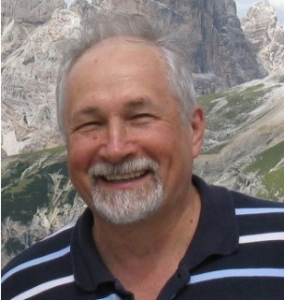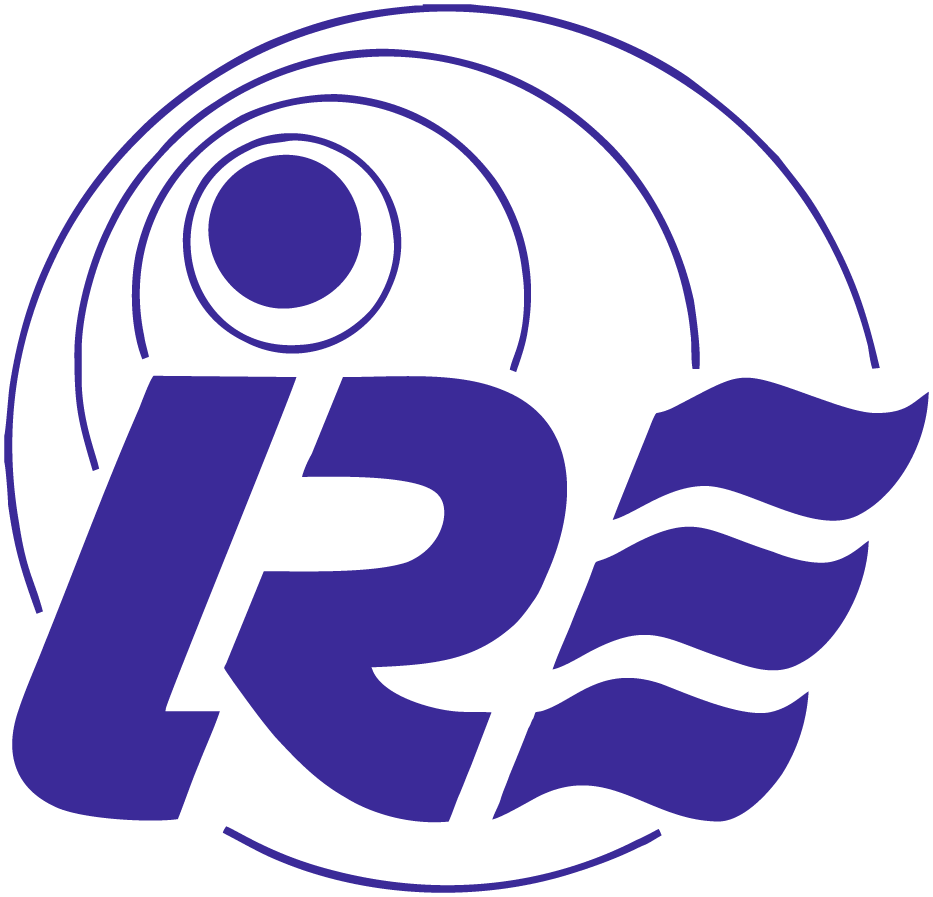 January 16, 2021 marks the 70th anniversary of Konstantin Alexandrovich LUKIN, Head of the Department for Nonlinear Dynamics of Electronic Systems at O. Ya. Usikov IRE NASU, an outstanding scientist in the fields of Nonlinear Electronics, Radio-physics and Noise Radar; State Professor; Dr. of Physics & Mathematics, IEEE Fellow.
January 16, 2021 marks the 70th anniversary of Konstantin Alexandrovich LUKIN, Head of the Department for Nonlinear Dynamics of Electronic Systems at O. Ya. Usikov IRE NASU, an outstanding scientist in the fields of Nonlinear Electronics, Radio-physics and Noise Radar; State Professor; Dr. of Physics & Mathematics, IEEE Fellow.
Friends, colleagues and students congratulate Konstantin Alexandrovich on his anniversary, wish him good health, inspiration, new creative ideas and scientific achievements!
K. A. Lukin was born in Stalinabad-city, Tajik SSR, USSR (now – Dushanbe-city, Tajikistan), received his secondary education in 1968 and entered Kharkov State University (now – V. N. Karazin Kharkiv National University), from which he graduated in 1973.
All K. A. Lukin’s creative activities are associated with the O. Ya. Usikov IRE of the National Academy of Sciences of Ukraine (IRE NASU), where he has been working since 1973 and has gone from a graduate student to the Head of the Department/Laboratory for Nonlinear Dynamics of Electronic Systems (LNDES). In 1980 he prepared his Ph.D. thesis “Nonlinear theory of Diffraction Radiation Generators” under the supervision of Prof. V. P. Shestopalov and defended it at the Physics Department of Lomonosov Moscow State University (MGU). In 1989 he became Doctor of physics and mathematics, having defended his thesis “Theory of Self-Oscillations in Devices of Diffraction Electronics” at the Kharkov State University. In 2004 he received the title of state professor, and in 2009 he was elected IEEE Fellow – a full member of IEEE, the world largest international scientific organization.
The scientific worldview of K. A. Lukin was formed in the creative atmosphere of the IRE and the NSC KIPT NAS of Ukraine, as well as the All-Union Scientific Schools and seminars on Nonlinear Physics (Gorky-city – now again Nizhny Novgorod) and Microwave electronics (Moscow – MGU, IRE AS USSR, MIEM and Saratov, – SSU, SPI) and in the post-Soviet period – the International Center for Theoretical Physics, ICTP, Trieste, Joint Research Center of the European Commission, JRC-Ispra EC, Italy; University of California at Berkeley; and also under the influence of well-known Kharkiv scientists, NASU academicians V. P. Shestopalov and A. S. Bakai, and American Professor Henning Harmuth and subsequent long-term cooperation with them.
In 1992, K. A. Lukin organized and headed a new scientific department of the IRE for the study of Dynamic Chaos in nonlinear physical systems and its application in Radiophysics, Electronics, and Radar – LNDES IRE NASU.
During his work for IRE NASU, K. A. Lukin became a world-renowned specialist in Radio-physics, Nonlinear Dynamics and NoiseRadar, and proved himself as a talented scientist and founder of new scientific trends.
K. A. Lukin created the theory of nonlinear non-stationary processes in resonant auto-generators with extended interaction, in particular, in Diffraction Radiation Generators (DRG). This theory made it possible not only to establish the physical nature of the observed nonlinear phenomena, but also to propose new ways to improve the main DRG performance. K. A. Lukin theoretically predicted a new mechanism for the transfer of electron energy to the field of an DRG open resonator, which is realized in the presence of two or more field variations along the motion of electrons. The predicted mechanism was observed experimentally in DRG of various frequency ranges. This broadened the knowledge about the induced diffraction and Cherenkov radiations of charged particles, and made it possible to propose and patent a new method for amplifying of electromagnetic waves.
The theory of excitation of open resonators created by K. A. Lukin is based on the spectral theory of open systems developed at IRE NASU. It is also applicable for deriving similar theory in quasi-optical resonators. In contrast to the previous approaches, the developed theory makes it possible to take into account the nonresonant radiation of internal sources from open resonators. The theory of self-oscillations in devices of Diffraction Electronics has become the basis of an interactive system for computer modeling and design of DRG, while the developed methods for solving nonlinear equations of DRG are widely used in modern microwave electronics.
The problem of EM signals propagation through a non-conductive lossy medium sup-porting magnetic and electric dipole currents was solved by K. A. Lukin in cooperation with the famous American Scientist Henning Harmuth. It was done in a self-consistent formulation for the first time. In particular, the propagation and transformation of EM signals through the interstellar and intergalactic medium (rarefied gas of atomic hydrogen) at distances commensurate with the Universe size – about 8-13 billion light years. These and other results are summarized in the joint monograph “Interstellar Propagation of Electromagnetic Signals”, Kluwer Academic/Plenum Publishers, N.Y.-2000.
K. A. Lukin formulated a new class of Electrodynamics problems – initial-boundary value problems for a linear wave equation with nonlinear boundary conditions. The original problem is reduced to a nonlinear functional-difference, or differential-difference equation, with a deviating argument and continuous time, which is successfully solved using nonlinear mapping methods. This approach was generalized for the problems of Electronics. In particular, it was applied to study the characteristics of the semiconductor photomultiplier proposed by K. A. Lukin and Hilda Cerdeira (ICTP), in which conditions have been created for multifold multiplication of electrons and holes due to impact ionization in narrow layers with a high electric field. These works made it possible to discover a new current instability in a back-biased asymmetric PN-junction with impact ionization and to develop a new concept for creating THz oscillator diodes on its basis.
In Quantum Mechanics, K. A. Lukin proposed a new method for analyzing the space-time evolution of quantum wave packet in an infinite potential well, based on calculating the wave function using a propagator of Schrodinger equation and taking into account multiple reflections from the boundaries. The proposed method is consistent with traditional approaches and is suitable for calculating of quantum packets evolution at intervals of arbitrary duration, ‘quantum carpets’ for linear and non-linear bouncing of the wave packet. In cooperation with Yu. L. Bolotin, K. A. Lukin discovered and investigated the interaction and exchange of regular and chaotic states in a compound quantum billiards when changing the asymmetry parameter in the irregular part of the billiard. Solving the problem of a classical particle motion in a potential random field in the presence of a quantum potential, he showed that with exact compensation of random deflections of the particle by the a quantum potential force, its motion obeys Schrödinger equation for the Ψ-function, with the phase expressed via particle action. In the case of incomplete compensation, the particle motion is described by the GRW-Equation (Ghirardi-Rimini-Weber).
K. A. Lukin has developed and created a number of chaotic signal oscillators in various wavelength ranges. In these generators, he predicted and for the first time discovered a new autodyne effect, which consists in the appearance of a periodic structure in the energy spectrum of the generated chaotic signal in the presence of reflections from a non-moving object located behind the signal’s coherence length. This effect enables measuring not only the speed of an object, but also the distance to it.
K. A. Lukin has founded and is successfully developing modern Noise Radar Technology. The generators of chaotic signals and unique digital-analogue correlation receivers developed by him have made it possible to create a number of noise radar systems:
- the world’s first Pulse-Coherent Surveillance Noise Radar;
- Ground Noise SAR based on an antenna with synthesized pattern;
- Ground Noise Arc-SAR,
and many others.
He also developed the method of spectral interferometry for decorrelated signals, which enables precise measurements of target ranges without using a delay line, in microwave, terahertz, infrared, optical, X-ray frequencies.
K. A. Lukin was the first to obtain a coherent radio-image of a landscape using a Ground Noise SAR developed jointly with scientists from JRC-Ispra, Italy. These experiments were highly appreciated by specialists and opened up wide opportunities for the development of noise radar systems for remote sensing of the environment, and ground SAR systems for precise monitoring of engineering structures: bridges, dams, TV towers, hangars, monuments, etc.
K. A. Lukin proposed and developed antennas of a new type – antenna with synthesized pattern, enabled implementation of radar tomography – formation of coherent 3D radio images of a terrain using for the first time Noise signals and Ground MIMO SAR developed in LNDES IRE NASU.
In recent years, K. A. Lukin has been actively developing a new direction: Quantum Noise Radar Sensors.
Scientific research of K. A. Lukin in the field of noise radar was supported by the Scientific Council on Sensor and Electronic Technologies of the NATO Science and Technology Organization (SET Panel, RTO NATO), which invited him to head the Problem Group on the development of Noise Radar in NATO and Partner countries, of which he has been in charge for over 15 years.
K. A. Lukin published about 360 scientific works, of which 2 are monographs and 4 are chapters of monographs. He received 12 patents for inventions, including 5 US and European patents. Eight PhD and one Master theses were defended under his supervision. K.A. Lukin is a member of the editorial boards of Ukrainian and International journals on radiophysics and electronics and a guest editor of special issues on Noise Radar Technology in three leading journals: IEEE AES Magazine (2020); MDPI: “Sensors” (2021) and MDPI: “Remote Sensing” (2021).
K. A. Lukin is a member of technical program committees of many international conferences: – International Radar Symposium – IRS (2003-2021); Signal Processing Symposium – SPSympo (2006-2021); International Vacuum Electronics Conferences – IVEC (2005-2012) and MM and SubMM Waves Symposium – MSMW (1996-2020). He was the Chairman of three international conferences on Noise Radar Technology: NRTW-2002, NRT-2003 and NRT-2012 (Yalta, Crimea). K. A. Lukin is a member of two specialized councils for the defense of doctoral dissertations in “Physical Electronics” (IRE NASU) and “Theoretical Physics” (NSC KIPT NASU).
For many years, K. A. Lukin worked as a visiting professor at leading universities in the US, Europe, Brazil and the PRC; for over 10 years he was an Associate Senior Research Fellow at the International Center for Theoretical Physics (ICTP, Trieste, Italy). He is an honorary professor at Harbin Polytechnic University (PRC). K. A. Lukin was the author and headed the implementation of more than 10 international scientific projects and is now a co-director from Ukraine of the joint project G5395 under the NATO program – Science for Peace and Security (SPS): ONERA, France; IRE NASU, Ukraine and Seoul National University (SNU), South Korea. In 2019, his SPS Project G4809 received the award: Best SPS Project 10th Anniversary (with scientists from Spain, and South Korea).
Friends, colleagues and students congratulate Konstantin Alexandrovich on his anniversary, wish him good health, inspiration, new creative ideas and scientific achievements!

 16.01.2021
16.01.2021